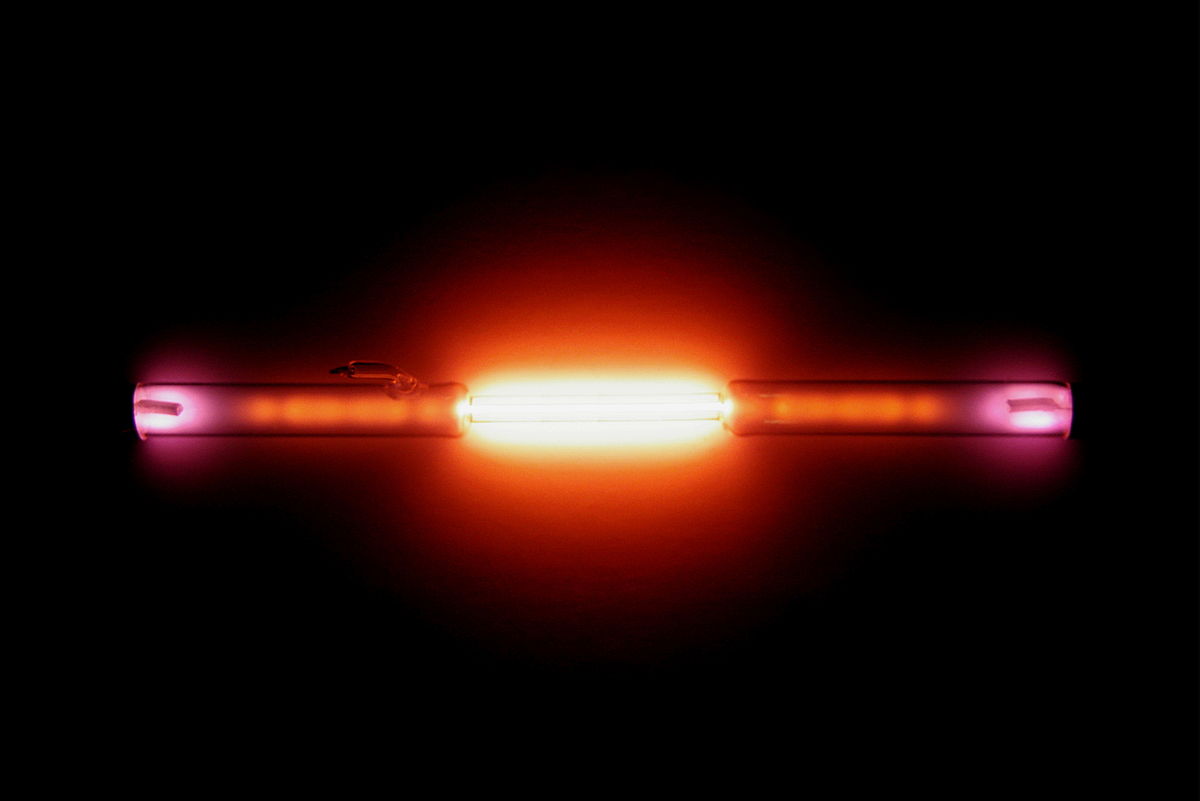This could be one of the most critical supply squeezes of our lifetimes … for a gas that is oddly both abundant and rare. And tech giants are about to find themselves fighting for who gets the leftovers, while the next explorer to make a discovery will probably reward investors multiple times over. Mentioned in today’s commentary includes: Taiwan Semiconductor Manufacturing Company Limited (NYSE: TSM), Advanced Micro Devices, Inc. (NASDAQ: AMD), NVIDIA Corporation (NASDAQ: NVDA), Maxar Technologies Inc. (NYSE: MAXR), Magna International Inc. (NYSE: MGA).
This gas is a very important part of hard drives. It’s the linchpin of big data storage, which we can’t get enough of. It’s essential to IBM, the king of quantum computing. Tesla CEO Elon Musk’s SpaceX needs tons of it. Musk says this gas costs him more than liquid oxygen, and prices are about to skyrocket. Google, owned by Alphabet needs this gas for a novel way to offer rural areas internet – from the stratosphere, and streaming giant Netflix has joined the list of major consumers of this gas for its massive data storage.
A new discovery would help science and medicine. It will save money for big data, too. And is critical for fiber optic cables, semiconductor chips, and superconductors.
It might even be the life of the party …NASA and Space X space missions need it. And without a new discovery, tech giants like Alphabet, SpaceX, Microsoft, IBM, and even Netflix will suddenly find that what used to be a commodity taken for granted is now priced to reflect a short squeeze.
The team at Avanti Energy Inc. (AVN.V; ARGYF) has already made a discovery in Canada’s prized Montney, for Encana. That’s one of the richest natural gas deposits in the world. And the team is using the same methodology to explore for what it hopes will prove to be some of the richest helium deposits in the world.
Three Prime-Time North American Helium Prospects
In just the past month, Avanti has made three key acquisitions – two in Alberta and one in Montana – that it hopes will put it on track to become the next potential leader in new helium discoveries.
That’s significant because we’re in the middle of the world’s third major helium shortage in 14 years, and this time it may be a supply squeeze like we’ve never seen before.
Why? Because we are now officially out of our helium comfort zone. Until now, we’ve always had the U.S. Federal Helium Reserve (FHR) in Amarillo, Texas, to rely on. Since the Cold War, the Fed has been stockpiling helium, providing some 40% of the world’s supply. But we’ve used most of that up, and in September, the reserve will be shut down, while the existing price ceiling will disappear.
Without new discoveries, we’ll fall short of what big tech, medicine, and space exploration need, and prices could skyrocket. That’s why Avanti has jumped on three major acquisitions.
First, on March 29th, Avanti acquired the license for over 6,000 acres from the Government of Alberta in highly prospective helium territory. A previously abandoned natural gas well on the property showed 2.18% helium and 96% nitrogen in the Cambrian and 0.3% helium and up to 98% nitrogen in the Devonian.
Offsetting wells in the area have multiple tests in Cambrian and Devonian intervals with up to 1.79% helium and 83-93% nitrogen content, and drill stem tests (DSTs) indicate reservoir quality rock in the Cambrian and Ordovician zones.
Next, on April 16th, Avanti made its move on ~12,000-acre prospective helium land package, this time in Montana, with a letter of intent to acquire. This is a large land position in the northern part of Montana, and it’s right near – and on-trend with – an active, nitrogen-rich helium drilling area in Saskatchewan.
Then, on May 10th, Avanti (AVN.V; ARGYF) acquired an additional strategic license in Alberta for ~2,500 acres that is highly prospective for potential helium extraction. The newly acquired property resides over an area with a closed structural high that is ideal for trapping helium and multiple helium shows have been identified in and around the property with shows up to 2%.
With helium running low, demand on the rise, and prices which could soar in the squeeze, Avanti is out in front of this game with the exploration advantage. They plan to spud their first well in by the end of 2021.
A World Without Helium?
Not if Avanti can help it. And all the better, geopolitically, if the next big helium discovery comes from North America. Helium powers our most critical tech projects. It’s a gas that supports superpower status, which makes the looming shutdown of the federal helium reserve all the more profound for explorers.
Beyond our breakthrough helium-powered hard drives that enable our massive data storage, superconductors, semiconductors, and space exploration, Google’s Project Loon initiative seeks to deploy a network of helium-filled balloons to provide internet connections to the rural world from the stratosphere. It hopes to connect the entire world using a gas we’re almost out of. And Netflix needs massive data storage capabilities (as does everyone in the streaming industry). Without helium, it’s much harder. Helium increases hard drive storage capacity by 50% and reduces power consumption while doing it.
The helium narrative is now the best commodity story out there for some investors, and if a small-cap miner makes the next big discovery … well, that’s where the biggest rewards (and risks) come from. That’s why Beacon Securities Limited recently initiated coverage on Avanti, calling it an “enticing investment opportunity” because of its “world-class team” and “supportive He market fundamentals”.
With Avanti’s (AVN.V; ARGYF) plans to use both “conventional” exploration to identify structural Cambrian-aged traps and the high point of drilling, and 80% proprietary methods, Beacon sees significant potential netbacks from this of C$309/mcf (with $300 helium prices) and C$548/mcf (with $500 helium prices).
Other Supply Shortages To Watch
Taiwan Semiconductor Manufacturing Co. (TSM) is the world’s largest contract chip manufacturer, meaning it’s tasked with making chips for dozens of fabless tech companies including Apple, Qualcomm, NvidiaandAdvanced Micro Devices among others. That means Taiwan Semiconductor’s responsibility is unparalleled. If it can’t keep up with demand, there could be some serious problems. The fact that only a handful of chip manufacturers actually own chip-making facilities has made the situation even more dire. Indeed, many leading top semiconductor companies are “fabless,” meaning they only design the chips but rely on other companies, known as foundries, to actually make the chips. The shift to outsourcing has been having a big effect on structural changes and related capacity because companies that cut orders in the early days of the pandemic have been forced to go to the back of the line.
Advanced Micro Devices (AMD) is another one of the world’s top chipmaker and semiconductor producers. And it is set to play a major role in producing the tech that will drive the future. While it’s primarily known as a gaming company, AMD, along with Nvidia are present in most modern computers, whether it’s a Dell, Lenovo, Razer or even an Apple, at least one component in that computer will likely be built and manufactured by either AMD or NVDA.
The companies aren’t just building home computers, either. AMD, for its part, is building CPUs to be used in massive data centers, the kind propping up Microsoft’s Azure cloud-based workstations and desktops. And its GPUs are providing the speed, security, and scalability to keep these data centers performing at the level needed to push modern tech into the future.
AMD’s biggest competitor, Nvidia (NVDA), is also pushing new tech into the future. It’s even setting new records with the introduction of its A30 and A10 enterprise server GPUs. Thanks to its innovation and dedication to its clients, Nvidia is present within the highest levels of tech in just about every industry imaginable. From Big Finance and Fintech to robots, engineering, and even building the cities of tomorrow, Nvidia’s hardware is at the core of some of the most exciting innovations being rolled out into the world today.
With more and more demand coming for semiconductors and new chip technology hitting the market, companies like Nvidia, AMD, Taiwan, Samsung and Intel are going to be some of the biggest benefactors. They’re already well-known in the industry, and this could just be their time to really shine. But a looming helium shortage could present a number of complications for the booming tech giants.
Maxar Technologies (MAXR) is a high-flying space stock with a lot of skin in the game. While space firm specializes in satellite and communication technologies, it is also a manufacturer of infrastructure required for in-orbit satellite services, Earth observation and more. So what does Maxar have to do with the resource industry? Actually, a lot.
SSL, a designer and manufacturer of satellites used by government and commercial enterprises, is one of Maxar’s wholly owned subsidiaries. It has pioneered research in electric propulsion systems, lithium-ion power systems and the use of advanced composites on commercial satellites. These innovations are key because they allow satellites to spend more time in orbit, reducing costs and increasing efficiency.
Maxar’s tech and innovative approach to the already-extremely complicated space industry, has helped the company see its share price climb where many of its peers have struggled. In fact, in just the past two years, Maxar has seen its share price increase by well over 1000%. And as the company secures more deals in the great beyond, the innovative firm will likely maintain its upward trajectory for some time.
Magna International (MGA) is an interesting roundabout way get in on the exciting resource and battery markets without betting big on one of the new unproven stocks captivating millennials right now. The six-decade-year-old manufacturing giant provides mobility technology for automakers of all types. From GM and Ford to luxury brands like BMW and Tesla, Magna is a master at striking deals. And it’s clear to see why. The company has the experience and reputation that automakers are looking for.
Over 10 years ago, Magna was already making major moves in the battery market, investing over half a billion dollars in battery production while the market was still in its infancy. At the time, electric vehicles as we know them had barely hit the scene, with Tesla launching its premiere car just two years prior.









